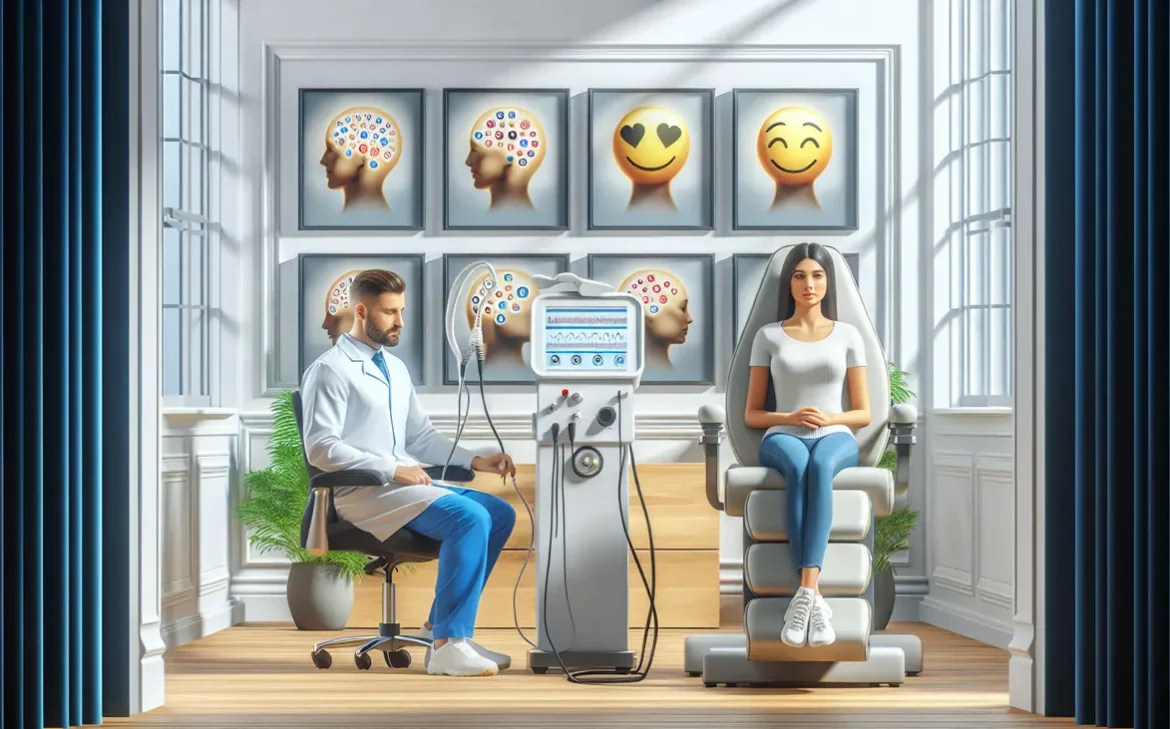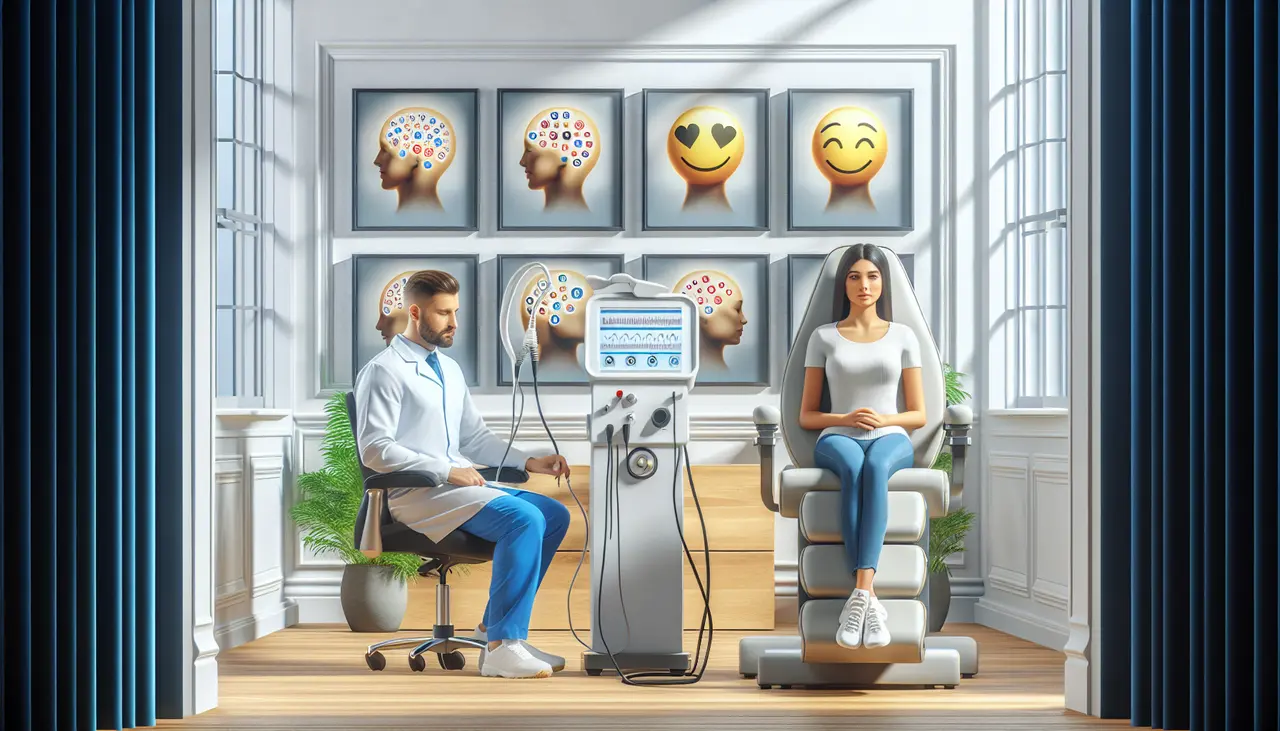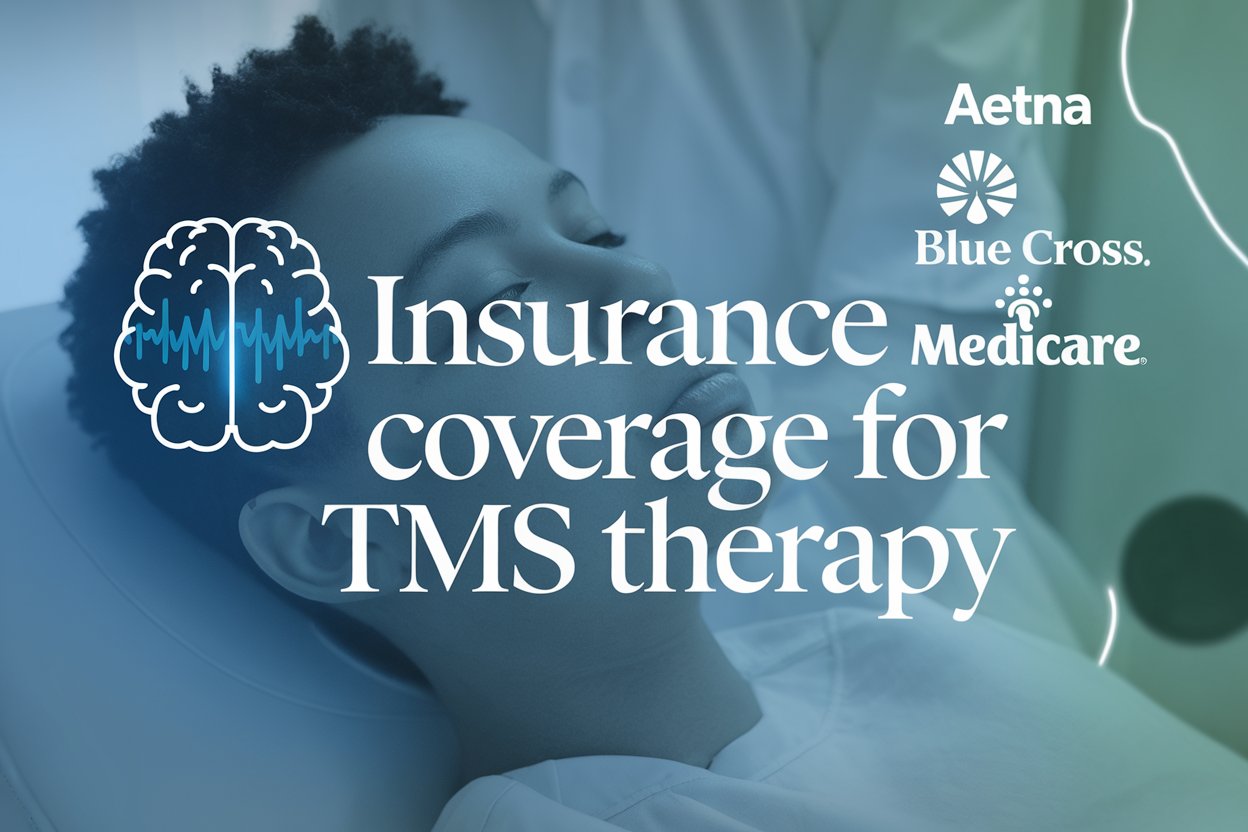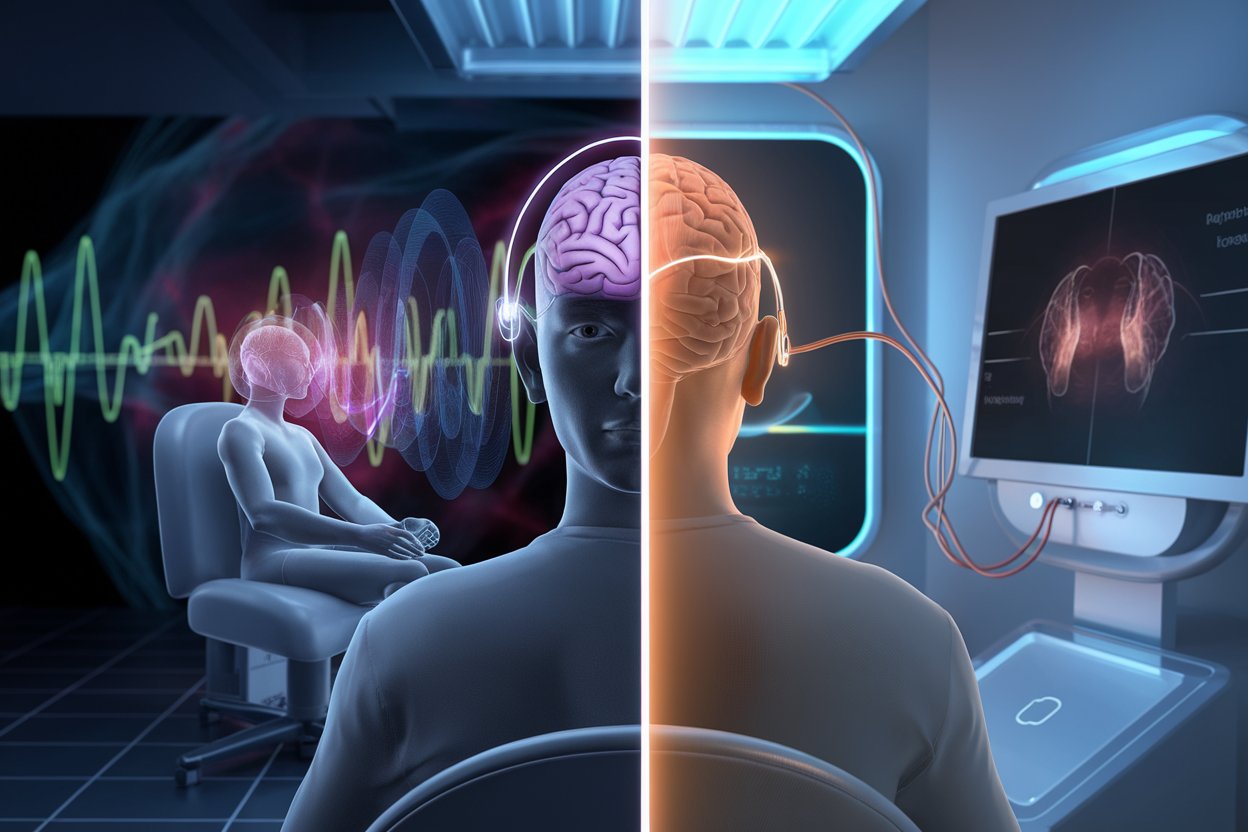Introduction to TMS for Mental Health
Transcranial Magnetic Stimulation, or TMS, is a popular term in mental health care because it works so well. Imagine a way to stimulate nerve cells in the brain that doesn’t involve cutting them open. Why? To help people with depression and other mental illnesses feel better. For TMS to work better, think of it as giving your brain a gentle push. No scalpels or surgery—just a device that is put close to your head while you are being treated.
TMS therapy usually takes place over a few weeks and includes several sessions. There is no magic bullet, but for many people, it changes everything when other treatments haven’t worked. It really shines as an option for people who want to avoid taking medicine or who haven’t been able to get better with more traditional methods.
So, if pills and therapy haven’t helped you fully control your mental health, TMS might be the next thing you should try.
What is TMS and How Does It Work?
Transcranial Magnetic Stimulation is a brand-new way to treat mental health problems like depression. Yes, magnets are used to get parts of the brain that aren’t working right to do so. It’s very simple: a machine sends magnetic pulses to your brain. These pulses wake up brain cells that help control mood and cause depression. For your brain, it’s like giving a car a jump start.
Most likely, you want to know if it hurts. There is no need for surgery because the method does not enter the body or break the skin. The machine does its job while you sit in a chair. It usually takes less than an hour. The best part? You can get back to your day right away; there’s no need for a break. So, TMS might be the answer for people who have tried everything else and nothing has helped their depression.
The Science Behind TMS for Mental Health Improvement
Transcranial Magnetic Stimulation (TMS) uses magnetic fields to wake up nerve cells in the brain, focusing on areas that control depression and mood. To understand the science behind this, picture the brain as a web of wires. The signals in these circuits get weak sometimes, especially in parts of the brain that deal with mood. TMS makes those signals stronger, which helps those parts of the brain talk to each other and work better. It’s like making your Wi-Fi stronger, but for your brain.
A big plus for many people is that this method doesn’t involve surgery or medicine. Studies have shown that TMS can be a game-changer for people with depression who haven’t gotten better with traditional treatments. It can reduce symptoms and, in some cases, even cause the depression to go away. The great thing about TMS is that it works very well and has few side effects compared to other treatments. Because of this, TMS isn’t just a treatment for many; it’s a way for them to get their mental health back.
Real-Life Success Stories: Transformations With TMS
A lot of people aren’t sure if TMS (Transcranial Magnetic Stimulation) really helps. The proof is in the stories of people who have already done it. One interesting story comes from Alex, a software developer who had been depressed for more than ten years. He tried TMS after taking a lot of medications and going to therapy. Within a few weeks, his depression lifted, and he was able to enjoy life and get back to doing the things he loved.
Then there was Maria, who had a lot of anxiety. Conventional treatments only barely touched the surface of what was wrong with her. TMS, on the other hand, gave her a new start. After treatment, she was able to go to social events without the crippling fear that had been a big part of her life before. Because these stories show how TMS can change lives for the better, they give people hope and proof that TMS does work.
TMS for Depression: A Closer Look at the Impact
When other treatments haven’t worked, transcranial magnetic stimulation can really help people who are depressed. The short version is that it uses magnetic fields to stimulate nerve cells in the brain, focusing on mood-controlling areas. The best part? It doesn’t hurt and doesn’t require any downtime. Studies have shown that people who get TMS have a lot fewer depressive symptoms.
A lot of people say it gives them a new lease on life and lets them do the things they love but had to stop doing because of their depression. That being said, TMS might be the answer if pills and therapy haven’t helped.
Overcoming Anxiety with TMS: Case Studies
Many people try different therapies to get rid of their anxiety, but sometimes they don’t work. That’s where transcranial magnetic stimulation (TMS) comes in. This non-invasive method has changed a lot of people’s lives. Here are some stories that show how TMS can help with anxiety. First, get to know Alex. Alex had anxiety for years and tried everything from therapy to medicine but didn’t feel much better.
Alex says that after TMS, he feels like a weight has been lifted off his shoulders. He has fewer anxious thoughts and is better able to enjoy the little things in life.
Then there’s Jamie. Jamie had such bad anxiety that it got in the way of her work and personal relationships. Jamie had a huge drop in panic attacks and a boost in confidence after TMS.
She called it a “turning point.” These stories show how TMS can give people who feel stuck in the cycle of anxiety hope and a new way to move forward. They show how it has the power to completely change people’s lives.
How TMS Aids in the Battle Against OCD
TMS therapy is a powerful tool in the fight against OCD that has shown promise where other treatments may not have worked. Imagine a non-invasive procedure that uses magnetic fields to stimulate nerve cells in the brain that are involved with controlling mood and depression. This would directly target the areas of the brain that OCD has made dark. The great thing about TMS is that it can focus on these specific areas and make big changes without pharmaceuticals or surgery.
Many people with OCD have come out of the darkness after TMS and found their symptoms to be much better. Even though it’s not a magic wand, the stories of people who have found relief say a lot. They talk about getting their lives back and getting rid of the cloud of constant, uncontrollable thoughts that hang over them. The process takes a few weeks and several sessions, but just think of the freedom you could get back in your mind. That’s how well TMS works to treat OCD.
The Journey of Recovery: What Patients Say About TMS
Transcranial Magnetic Stimulation (TMS) patients talk about how their lives changed in inspiring ways. A lot of people say that TMS helped them get better after years of having mental health problems.
One patient says, “I felt a lift I hadn’t felt in years,” which means they got better from their depression in a way that medications couldn’t.
The return of hope is another feeling that many people share.
Someone else says, “It’s like the fog cleared,” referring to the newfound clarity and hope after TMS. The journey isn’t magic that happens right away; it takes work.
The sessions last for weeks, but for many, the small steps towards improvement are the bright end of the tunnel. What’s important is that these stories don’t show any bad side effects, which makes the journey easier. Based on what people have said, TMS is not just a treatment; it’s also a way to get your life back.
Expert Opinions: Psychologists and Psychiatrists on TMS
Psychologists and psychiatrists have established that TMS is a significant advancement in the treatment of mental illness, particularly for anxiety and depression. “It’s like turning on a light in a dark room” is something they say a lot. When traditional treatments like therapy and medication don’t work, most professionals agree that TMS is a great option for those patients.
People who work with it say it has few side effects, with temporary pain at the treatment site being the most common. A professional said, “It’s non-invasive and doesn’t require drugs, so it’s a great choice for many.”
Additionally, they point to studies that show about one-third of people get better, and one-half of those people get rid of all their symptoms completely. The most rewarding thing for a psychiatrist is seeing their patients get better. Plus, they think TMS is a big step forward in mental health care, not just another treatment.
Conclusion: The Future of TMS in Mental Health Treatment
Treatment for mental health problems with TMS is at an exciting crossroads. As more people share their successes, it becomes harder to ignore the possibilities this technology offers. Our focus is on a tool that has the potential to change how we deal with mental health issues. It’s not just another treatment; it’s a lighthouse of hope for people who have found regular treatments ineffective.
As a way to make TMS better and more available to more people, scientists are working hard on their studies. Technology improvements are expected to lower costs, make treatments more effective, and maybe even expand their use to include more mental health conditions in the future. To help fight mental health problems in the future, TMS might become a well-known name. Watch this closely. A lot of ground still needs to be covered, but things are looking up.






